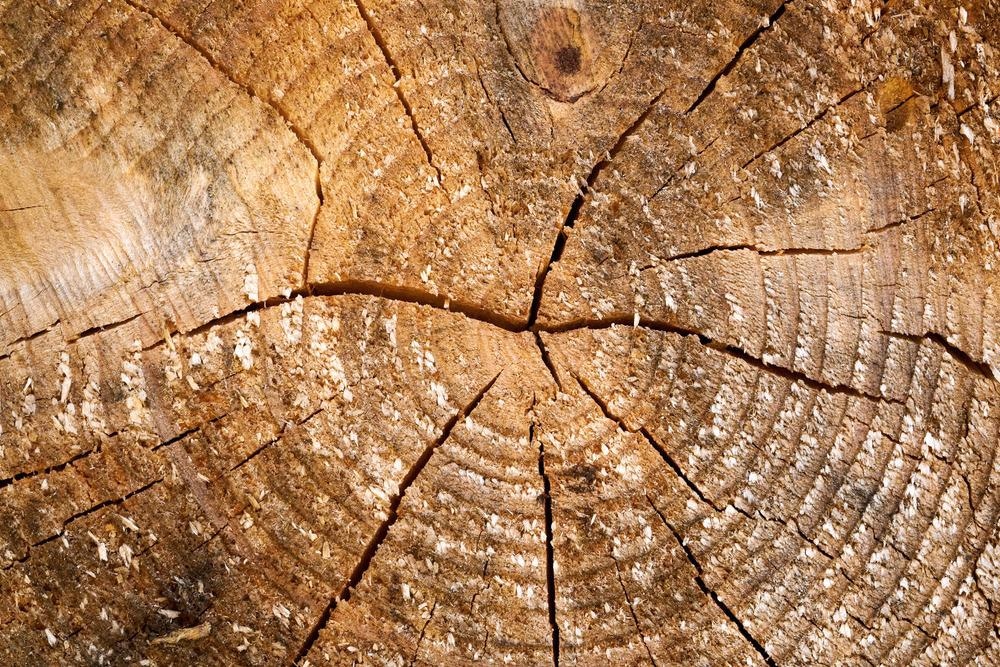Transparent wood is the most recent novel development that could replace conventional glass or plastic windows. While glass and plastics are transparent and can be made to provide structural support, limitations on enabling heat loss and acting as poor insulators illustrate the requirement for advancements in this industry.

The high insulating property of wood would ensure its suitability as a potential replacement. However, wood is not usually transparent. Many avenues have been investigated to overcome this challenge, ranging from delignification to a new study from the University of Maryland, focusing on the use of hydrogen peroxide.
Transparent wood could be an exciting development that would provide an energy-efficient and sustainable alternative to glass or plastic. This article will give an overview of this novel research and its relationship to the carbon emission concerns outlined by the Intergovernmental Panel on Climate Change (IPCC).
With a growing demand for more energy-efficient materials, the use of wood for various applications has increased. This is due to this renewable resource's characteristic of capturing excess carbon dioxide released into the atmosphere. The significance of this is outlined consistently throughout the IPCC's 2021 report, which provides an overview of the current state of the climate and the role and negative influence of human activities.
Every ton of carbon emission produced contributes to global warming. Utilizing a material such as wood for potential use within windows worldwide could reduce the level of this pollutant in the atmosphere due to its absorbent carbon dioxide properties.
Transparent Trees: Turning Wood Transparant
The increased search for sustainable optical materials has led to material scientists experimenting with the concept of transparent wood. The University of Maryland has undertaken novel research and uncovered a method enabling the production of optically transparent wood through the modification of lignin structures within wood using a solar-assisted chemical brushing approach.
The two main components within wood consist of cellulose and lignin, where lignin plays a role in absorbing light, while cellulose, comprised of wood fibers, is hollow tube-like structures. Light-activated compounds within lignin are known as chromophores and drive the characteristic brown-like color. The air within the hollow tube-like cellulose structures also aids in decreasing the transparency of wood through the scattering of light.

Image Credit: OlegRi/Shutterstock.com
Overcoming Transparency
The challenge of producing transparent wood consists of two steps: the first step is to completely remove light-absorbing lignin from the cell walls of wood by using a solution-based immersion method. The second step includes infiltrating a refractive index matching polymer into the wood that has been delignified to reduce the level of light absorption and light scattering.
Delignification consists of a high volume of environmentally harmful chemicals and energy consumption. It would also result in a mechanically weaker material and less structurally sound, which would not be beneficial for use as a replacement for glass or plastic for windows.
The time taken to remove the lignin from the wood scaffold can lengthen the processing time, and the waste generated cannot be easily recycled.
With transparent wood being a sustainable material, having a high volume of non-disposable waste would only create more environmental harm.
The ability to recycle materials is significant for environmentalists, and as stated throughout the IPCC 2021 report, climate change is affected heavily by the activities of humans. However, in an attempt to reach a net-zero of global anthropogenic carbon dioxide emission, the potential to remove atmospheric carbon dioxide through applications such as transparent wood could aid this goal.
Novel Research
The novel development uncovered by the researchers at the University of Maryland includes overcoming the transparency obstacle of wood through using hydrogen peroxide. Their research was published in Science Advances on January 21st, 2021. While this chemical is usually used as a bleaching agent, it can also modify the structure of chromophores, preventing them from absorbing light or coloring wood with its brown hue.
The benefit of this method consists of preserving most of the lignin within the wood structure, which may be more environmentally friendly than the process of complete delignification. This novel process consists of utilizing lignin as a binder to provide a scaffold for polymer infiltration, which includes advantages such as reducing chemical and energy consumption and decreasing processing time.
The research team produced transparent wood approximately one millimeter in thickness. It also possessed high transmittance, high haze, and a high level of light-guiding effect over visible wavelength. This wood transparency method is effective, highly scalable, and is a promising candidate for glass or plastic replacement when considering energy efficiency within buildings.

Image Credit: S_Photo/Shutterstock.com
The use of solar UV light to drive the decoloration of wood into transparent wood through the solar-assisted chemical brushing process enables this process to be eco-friendly and sustainable.
Having sustainable optical materials would be beneficial as methods would not require a high volume of chemicals or high waste disposal, which would add expenses to businesses. By removing the light-absorbing chromophore elements within lignin structures, the optical properties of wood enabled successful transparency.
This technology may have a promising future as an alternative for glass or plastic materials, reducing the disposal burdens and aiding the IPCC's goal towards having zero carbon emissions. However, further research would need to be undertaken to ensure the universality of this technology and the cost-benefit applications for industrial use.
Industrial Response to Climate Change
This article is a part of the IPCC Editorial Series: Industrial Response to Climate Change, a collection of content exploring how different sectors are responding to issues highlighted within the IPCC 2018 and 2021 reports. Here, Materials showcases the research institutions, industrial organizations, and innovative technologies driving adaptive solutions to mitigate climate change.
References and Further Reading
Xia, Q., Chen, C., Li, T., He, S., Gao, J., Wang, X. and Hu, L., (2021). Solar-assisted fabrication of large-scale, patternable transparent wood. Science Advances, 7(5), p.eabd7342. Available at: https://doi.org/10.1126/sciadv.abd7342
IPCC. (2018) Summary for Policymakers. Global Warming of 1.5 °C. An IPCC Special Report on the impacts of global warming of 1.5 °C above pre-industrial levels and related global greenhouse gas emission pathways, in the context of strengthening the global response to the threat of climate change, sustainable development, and efforts to eradicate poverty. Available at: https://www.ipcc.ch/
IPCC. (2021) Summary for Policymakers. Climate Change 2021: The Physical Science Basis. Contribution of Working Group I to the Sixth Assessment Report of the Intergovernmental Panel on Climate. Available at: https://www.ipcc.ch/report/ar6/wg1/downloads/report/IPCC_AR6_WGI_SPM.pdf
Info Bloom. (2021) What Are the Different Methods of Delignification?. [online] Available at: https://www.infobloom.com/what-are-the-different-methods-of-delignification.htm
The Conversation. (2021). Transparent wood is coming, and it could make an energy-efficient alternative to glass. [online] Available at: https://theconversation.com/transparent-wood-is-coming-and-it-could-make-an-energy-efficient-alternative-to-glass-154981
Disclaimer: The views expressed here are those of the author expressed in their private capacity and do not necessarily represent the views of AZoM.com Limited T/A AZoNetwork the owner and operator of this website. This disclaimer forms part of the Terms and conditions of use of this website.